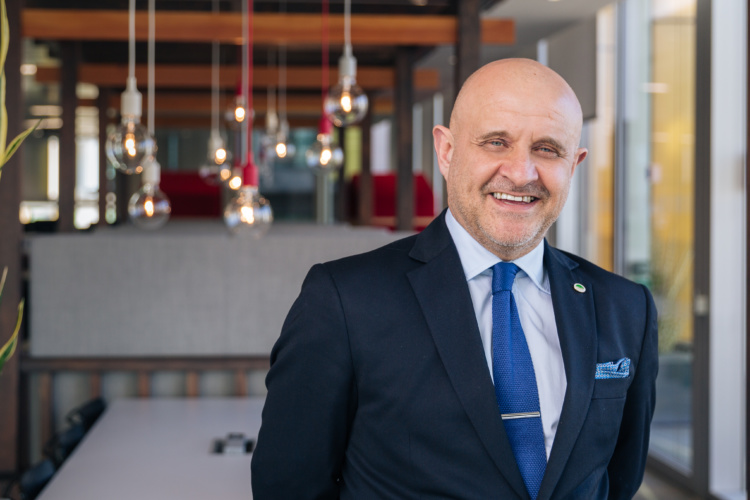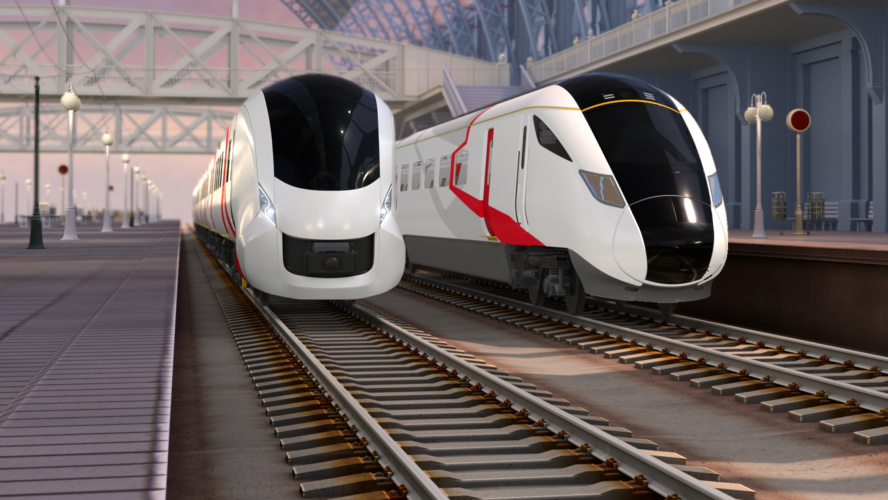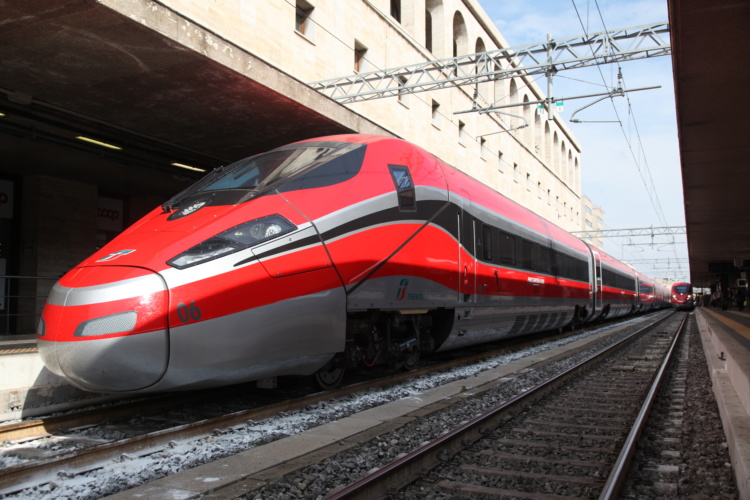What propulsion innovations will help power the rail sector towards net zero?
 Despite the challenges we all face in this pandemic, the need to innovate and tackle climate change remains constant. Therefore, I welcome the certainty that climate change targets offer our sector during these uncertain times.
Despite the challenges we all face in this pandemic, the need to innovate and tackle climate change remains constant. Therefore, I welcome the certainty that climate change targets offer our sector during these uncertain times.
They are particularly useful because rail undeniably has an important role to play because it is the most energy and carbon efficient way to move high volumes of people.
It won’t be easy and will require a myriad of varying technologies, behaviour change and private-public partnership, but to put it in its simplest terms, Hitachi Rail can help reduce transport emissions through the introduction of:
- Battery trains, which decarbonise, improve air quality and make electrification simpler, cheaper and quicker.
- High-speed rail solutions, to encourage modal shift from automotive and air travel.
Can you outline some of your organisation's own key activities in this area?
Firstly, battery trains. Hitachi Rail has been developing alternative train traction solutions for over 17 years and we successfully introduced one of world’s first battery fleets into Japanese passenger service in 2016.
Building on our experience and expertise, which we honed in Japan, Hitachi Rail has two battery train solutions for both regional and intercity routes. We see battery trains as an area of significant growth across the globe. Just in the UK, there could be around 400 trains using our battery technology by 2030, which would have the combined effect of stopping over 1.7 million tonnes of CO2 emissions during their lifetime.
CLICK HERE FOR MORE SUSTAINABLE MOBILITY CONTENT
In battery mode, Hitachi trains will be able to extend zero-emission travel beyond existing electrification infrastructure or bridge gaps in the network. Our Battery solutions negate the need to electrify the entire route, creating a cheaper and simpler decarbonisation solution for rail.

To encourage people out of their cars and reduce unnecessary air travel, rail has to be attractive and reliable. This is why investing in high-speed trains is key to any infrastructure and decarbonisation strategy.
If you have travelled on Europe’s fastest train – the ETR1000 – the benefits are undeniable. Trenitalia’s high speed fleet, built by Hitachi Rail and Bombardier, has enabled the number of passengers carried on Italian high speed services to rise from 6.5 million in 2008 to 40 million in 2018, an increase of 517%.
At Hitachi Rail, we want to replicate this modal shift success around the globe.
What are the key obstacles and challenges to developments in this area?
Hitachi Rail is ready to deliver both battery and high-speed trains for the UK. Along with the wider rail industry, we support the direction of travel but we need more certainty on future investment and orders. This would improve the conditions for innovation and meaningful decarbonisation.
For battery trains, it is vital that the industry sees the solution as an enabler of electrification, not a blocker. They are complementary technologies, which improves the overall business case for electrification. Therefore, a thorough assessment of the ability to reduce infrastructure costs and timeline for delivery seems sensible and logical. In doing so, it will be possible to see if major electrification upgrades can take place simultaneously and accelerate towards an emission-free railways.
For high-speed rail, important decisions regarding infrastructure are continuing at a healthy pace across the world. Equally, train manufacturers, like Hitachi Rail, will continually push the envelope on high-speed trains, to ensure rail provides a greener and long-term alternative to domestic air travel.

What is your vision for the long-term future of propulsion in your sector?
Rail is going to become increasingly digitised and integrated into other sectors involved in smart cities, mobility-as-a-service and flexible green grid. Therefore, Hitachi Rail won’t be able to stay at the forefront of innovation by its self. This is why we are focused on building partnerships with other like-minded, innovative, clean tech companies like Hyperdrive Innovation, Perpetuum and Hitachi group companies such as Hitachi ABB.
Hyperdrive Innovation is going to apply its knowledge and expertise from the automotive sector, to develop a market leading battery for Hitachi trains. Perpetuum predictive analytics improve reliability and availability of existing trains. Meanwhile, Hitachi ABB’s experience of the power sector allows our battery train solution to incorporate charging, storage and grid management. These partnerships creates an entry point into the rail market for our partners, potentially leading to future growth and jobs.
However, it is important to recognise that the established technologies of today - battery trains, discontinuous electrification and high-speed trains - are the technologies will help achieve the 2050 net zero emission target.
Nick Hughes is sales director at Hitachi Rail Ltd




Glasgow trial explores AR cues for autonomous road safety
They've ploughed into a few vulnerable road users in the past. Making that less likely will make it spectacularly easy to stop the traffic for...